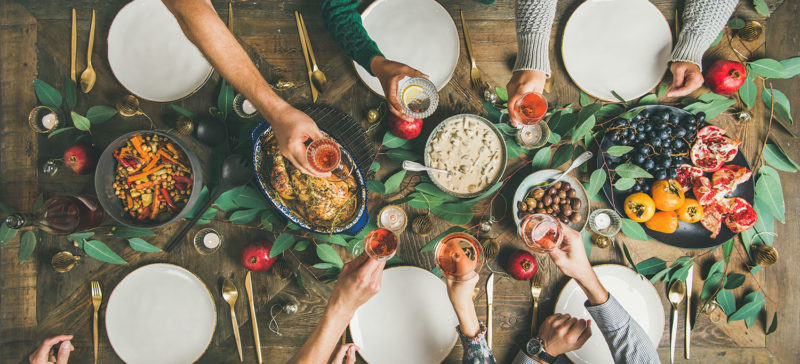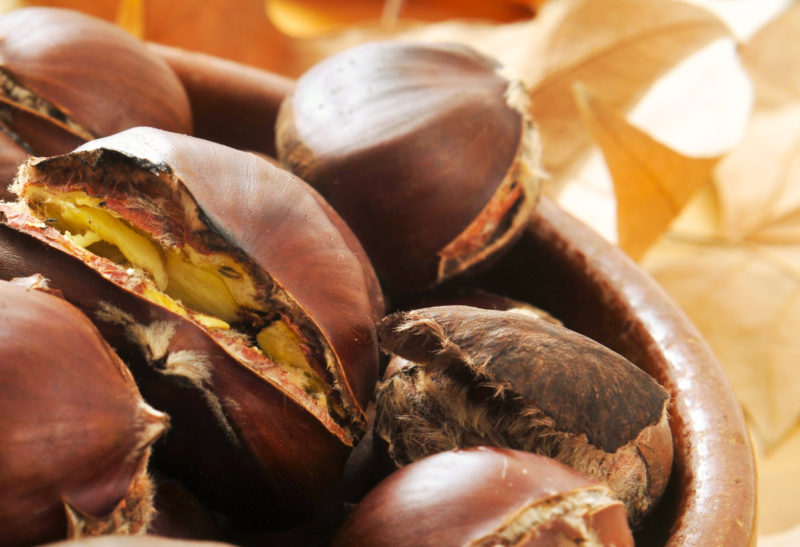

‘Torró’: a sweet with a long tradition
If there is one thing that tells us that the Christmas holidays are approaching, it is the sight of ‘torró’ in the windows of bakeries and on the shelves of food shops. This kind of nougat, along with wafers, is undoubtedly the star product of Christmas desserts.
The origin of ‘torró’, according to the most widely accepted theory, is Arab-Jewish. However, there are others who indicate that its origin is from the Catalan Countries, either because of its name, “torró”, or because the Catalan Countries are where it reaches its peak. This special kind of nougat has been made for centuries, from Alacant to Northern Catalonia, both in an artisanal and industrial way.
Nowadays there are ‘torró’ to suit all tastes. As well as the traditional ones — made from hazelnuts, almonds, honey or sugar and egg white, hard and soft —, there are also those with very different flavours and adapted to all the needs of customers: for diabetics, coeliacs, vegans… And for different palates and tastes: cream, chocolate with nuts, with liqueur, with fruit, with salt and a long etcetera. Because the imagination of the master nougat maker means that every year new flavours of ‘torró’ come onto the market.
A recipe that has survived to the present day
The main ingredients of nougat are hazelnuts or almonds, honey or sugar and egg white. The first cookery recipe book to mention a recipe for ‘torró’ is the ‘Llibre de Sent Soví’, dating from 1324 and written by an anonymous author. However, the oldest preserved recipe is for hazelnut ‘torró’, which appears in the 15th-century ‘Llibre de totes maneres de confits’ (Book of all kinds of confits).
From Andalusian cuisine there is a recipe book by Ibn Razin, from the 13th century. In both recipes it is said that the ‘torró’ is made with nuts, honey and egg white, in the same proportions and following the same process. However, there is one difference between them: the dried fruit used. The Arab recipe uses almonds and walnuts, while the Catalan recipe uses hazelnuts. The Agramunt ‘torró’ has kept the medieval recipe of the ‘Llibre de totes maneres de confits’, both in the ingredients and in the preparation.
Agramunt or Xixona?
Thus, ‘torró’ can be made in a traditional way or in an industrial way. Artisanal nougats are made in small bakeries scattered throughout the country. However, there are some special nougats that have a seal of quality and origin. The most traditional are hard ‘torró’ and soft ‘torró’ — popularly known as ‘Torró of Alacant’ and ‘Torró of Xixona’, respectively — and ‘Torró’ of Agramunt.
In order to guarantee the quality and origin of the product, a series of regulations have been approved that legally protect artisan nougat. The nougats are under the regulatory umbrella of the Protected Geographical Indications (PGI) regulatory councils. These products must be produced, processed or manufactured in the place that gives its name to the indication, including traditional agri-food product designations, whether geographical or not, if they meet the requirements mentioned in Regulation 510/2006.
Thus, ‘torró’ of Agramunt, made in the town of Agramunt (Urgell), is made according to the oldest known recipe and is presented in round or rectangular tablets in the middle of angel bread of various sizes and weights. The minimum percentage of almonds or hazelnuts is 46 to 60 %, depending on whether the ‘torró’ is extra or supreme. There is documentary evidence that nougat has been made in Agramunt since 1741, when seven master nougat-makers were registered.
The ingredients of ‘torró of Xixona’ and ‘torró of Alacant’ are also almonds, honey, sugar and egg white. The geographical identification of Xixona emphasises that the distinguishing feature is the process, with its own traditional techniques (roasting, ‘punto de bola’ baking, ‘arrematat’, etc.) and tools (toasters, mechanics, stone mills, refiners, etc.). There is evidence that ‘torró’ was already being made in Xixona in 1588, thanks to a report by the historian Joaquim Miret i Sans. The first records of ‘torró’ from Alacant date from the second half of the 16th century.
Some Catalan curiosities
In Catalonia, we have known about the consumption of ‘torró’ at Christmas and other important festivities since the beginning of the 13th century, as the ‘Costumari’ of the monastery of Sant Cugat del Vallès, written between 1221 and 1223. At that time, nougat was already a festive dessert that shared the table with wafers and ‘piment’ (a drink made with wine, honey and spices). There are also literary references during the 14th century.
The Franciscan Francesc Eiximenis considered nougat to be too luxurious a food and in his book, ‘Terç del Crestià’, written in 1384, he recommended against eating nougat to combat the sin of gluttony. On the other hand, at that time there were recommendations in favour of eating nougat. For example, the court physician Arnau de Vilanova, in his work ‘Regimen sanitatis ad regem Aragonum’, praised the dietary virtues of the nuts when they were made with honey or sugar.
On the other hand, we find in documents dating from 1376 that in the monastery of Pedralbes the nuns made ‘torró’ for other congregations, such as the Franciscan friars. In the 14th century, nougat consumption spread to all social classes, as it is recorded that it was given to the poor at the Hospital de la Santa Cruz in Barcelona. In the 15th century, ‘torró’ was not only eaten by monks, but also by nobles, who not only ate it, but also gave it as a gift.
Where does the name ‘torró’ come from?
As for its name, the dictionary of the Catalan language says: “s. XIV; of uncertain origin, probably from ‘to toast’, with the suffix ‘-ó’ of action; perhaps also from ‘earth’ in the sense of ‘clod’, by comparison with a conglomerate of earth, which gave in Cat. ‘terró’, ‘terronet’, with assimilation of the ‘-e-’ to the ‘-ó’, favoured by the verb ‘tostar’.”
It is also said that the name “torró” comes from an 18th century Barcelona confectioner called Torró, a very popular surname at the time. Joan Coromines believes that the word “torró” was formerly “terró”, and that it probably derives from “terra”, meaning clod of earth. On the other hand, it is also believed that it is called “torró” because its ingredients are toasted.
A sweet known all over the world
Nougat, wherever it comes from, is undoubtedly a Mediterranean product. In ancient Greece, during the Olympic Games, athletes were given a mixture of nuts and honey. In Arab culture, there are many sweets made with nuts mixed with honey or sugar, such as ‘halva’, but they have different textures than nougat.
In the north of Italy, in the city of Cremona, they make desserts called ‘torrone’, also made with the classic ingredients of nougat. Legend has it that the name ‘torrone’ originated in 1441 on the occasion of the wedding of Francesco Sforza and Bianca Maria Visconti, dukes of Milan. To celebrate the wedding, a cake was made in the shape of Cremona Castle. Sicily also has a nougat tradition, as do Lombardy, Veneto and other parts of Italy.
Moreover, in Northern Catalonia, making ‘tourons’ is a tradition that has been preserved and many bakers make and sell these sweets at Christmas time. It is clear that they are traditional and deeply rooted desserts when popular culture has even turned them into a saying: “Christmas without nougat, no one’s Christmas”.
Today, ‘torró’ is present all over the world. This artisanal product is considered to be of high quality and, as in middle age, it is offered as a gift. Its recognised dietary properties make it a healthy food that, as well as sweetening our lives, helps us to maintain a balanced diet.
11Onze s’està convertint en un fenomen com a primera comunitat fintech de Catalunya. Ara, llança la primera versió d’El Canut, la super app d’11Onze, per a Android i Apple. Des d’El Canut es pot obrir el primer compte universal al territori català.





Una bona història,i m’encanten i us diré més encara fora de Nadal
M’agradat molt
Article interessant. Gràcies. En gaudirem aquestes festes.
Moltes gràcies pel teu comentari, Pere!!!
Un article molt interessant però sobretot DELICIÓS! Bones Festes!
Celebrem que t’hagi agradat, Francesc. Moltes gràcies pel teu comentari i que gaudeixis tu també unes molt bones Festes!!!
Ok 👍
Gràcies, Josep!!!
La ruta del torró, una ruta per la nació catalana, des de la Catalunya Nord fins Alacant aprenent història, geografia i agricultura mediterrània.Un article molt interessant amb final feliç. Podem menjar i gaudir dels torrons, que a més d´endolcir-nos la vida, al ser una menja sana ens ajuda a reivindicar el sentit del gust- ara mateix en hores baixes- i allibera-nos de remordiments mentre masteguem. Què més podem desitjar com a final d’un bon àpat? Bon Nadal a tothom!
Gràcies pel teu comentari, aquests dies gaudirem molt dels torrons! Bon Nadal, Mercè!
👌
Gràcies, Joan!!!